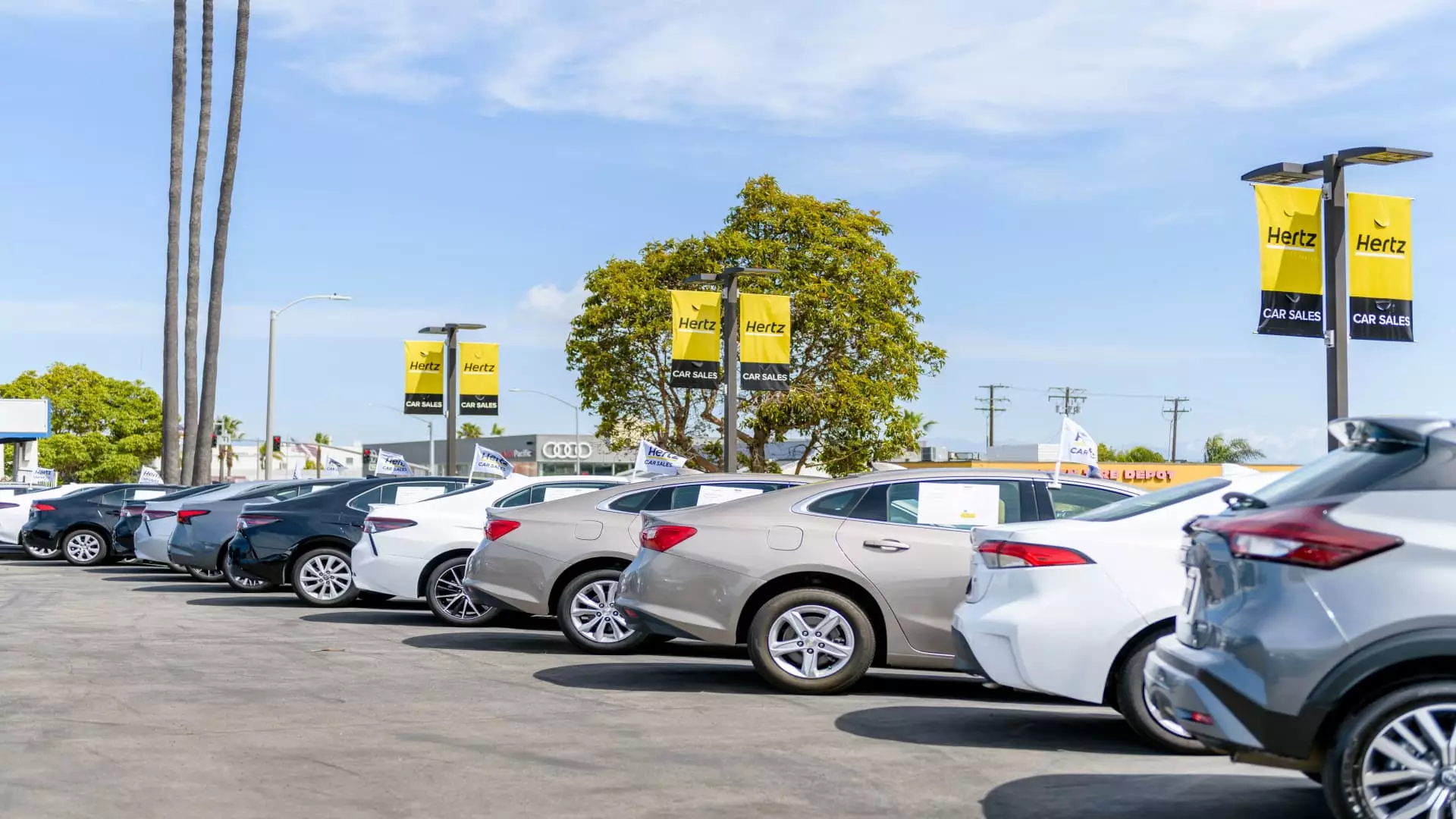Hertz’s recent move to sell preowned vehicles through Amazon Autos represents more than a mere diversification; it signals a deliberate attempt to reshape the traditional car buying landscape. In an era where convenience and immediacy define consumer expectations, Hertz recognizes that the future of automotive retail hinges on online accessibility. By partnering with Amazon, a titan of e-commerce, Hertz positions itself as a forward-thinking enterprise eager to capture a broader, tech-savvy customer base. This isn’t just about expanding sales channels—it’s a contest for control over the next frontier of vehicle retail, where convenience reigns supreme and trust in legacy brands must be earned anew in the digital age.
The decision to spotlight used cars on Amazon serves a dual purpose: capitalizing on the higher margins typically associated with preowned vehicles while leveraging a platform with unmatched reach. Customers can browse thousands of available vehicles, sign documents electronically, and even complete their purchase virtually, culminating in vehicle pickup at Hertz locations. This seamless process exemplifies a shift towards a frictionless customer experience—yet it also raises critical questions about reliability, consumer confidence, and the erosion of traditional dealership relationships. Hertz’s strategic push aligns with a broader move in the automotive industry that seeks to relegate brick-and-mortar showrooms to showrooms-in-name-only, while digital giants cultivate a new realm of consumer trust and loyalty.
Marketplace Expansion as a Power Play
Hertz’s integration into Amazon Autos is not happening in isolation; it’s part of a calculated vision to elevate its profile in vehicle sales—a move that could redefine the company’s core revenue model. Historically a rental company, Hertz has long struggled to stabilize from the fallout of COVID-19 and the subsequent disruptions to travel and mobility. The company’s decision to pivot toward retail sales and digital channels is an acknowledgement that, in uncertain economic times, diversification is not optional—it’s essential for survival. With revenue from rentals declining due to lingering pandemic effects, the retail segment, particularly used vehicle sales, offers a promising avenue for steady profit generation.
This approach taps into the tremendous scale of Amazon’s platform, exposing Hertz’s used inventory to millions of daily shoppers who might have previously only considered rentals. By doing so, Hertz not only increases the visibility of its vehicles but also challenges traditional dealerships to innovate or be left behind. The partnership is a strategic power play designed to dominate local markets—in Dallas, Houston, Los Angeles, and Seattle initially—and to expand nationally. These urban centers are crucial battlegrounds where consumer behavior gravitates toward digital solutions. If Hertz’s model succeeds, it could pressure traditional car dealerships to expedite their own digital sales efforts or face marginalization.
The Broader Industry and Market Implications
What makes Hertz’s move intriguing is its potential to disrupt multiple facets of the automotive ecosystem. For one, it accelerates the decline of the conventional dealership model that has long relied on in-person sales and on-site negotiations. Consumers increasingly prefer to browse, compare, and even buy cars from the comfort of their homes—an evolution driven by broader technological advancements and shifting expectations. Hertz’s partnership with Amazon is a clear acknowledgment that the future belongs to those who meet customers online, offering instant access with minimal friction.
However, skepticism about the durability and authenticity of trust in these digital models remains. Purchasing a vehicle online, especially used cars, demands a high level of confidence in the vehicle’s condition, history, and value. Hertz’s established reputation in rentals may serve as an advantage, but this is uncharted territory in terms of how consumers will perceive the transparency of its used car sales. Additionally, Amazon’s nascent auto sales efforts are still in their infancy, and this partnership is as much about leveraging brand synergies as it is about fundamentally transforming buying behaviors.
As Hertz accelerates its online retail ambitions, larger questions emerge about market consolidation. Will other rental giants or automotive players follow suit? Will traditional dealerships develop their own digital platforms that rival Amazon? The clash between legacy physical dealerships and digital disruptors is inevitable, and Hertz’s aggressive push suggests it’s prepared to fight for dominance in this new landscape. The real challenge will be convincing consumers that buying a used vehicle online, through a marketplace like Amazon, is as trustworthy and satisfying as traditional in-person negotiations—they need more than just convenience; they need confidence in quality and service, which Hertz must deliver if it truly wants to reshape the future of automotive retail.

